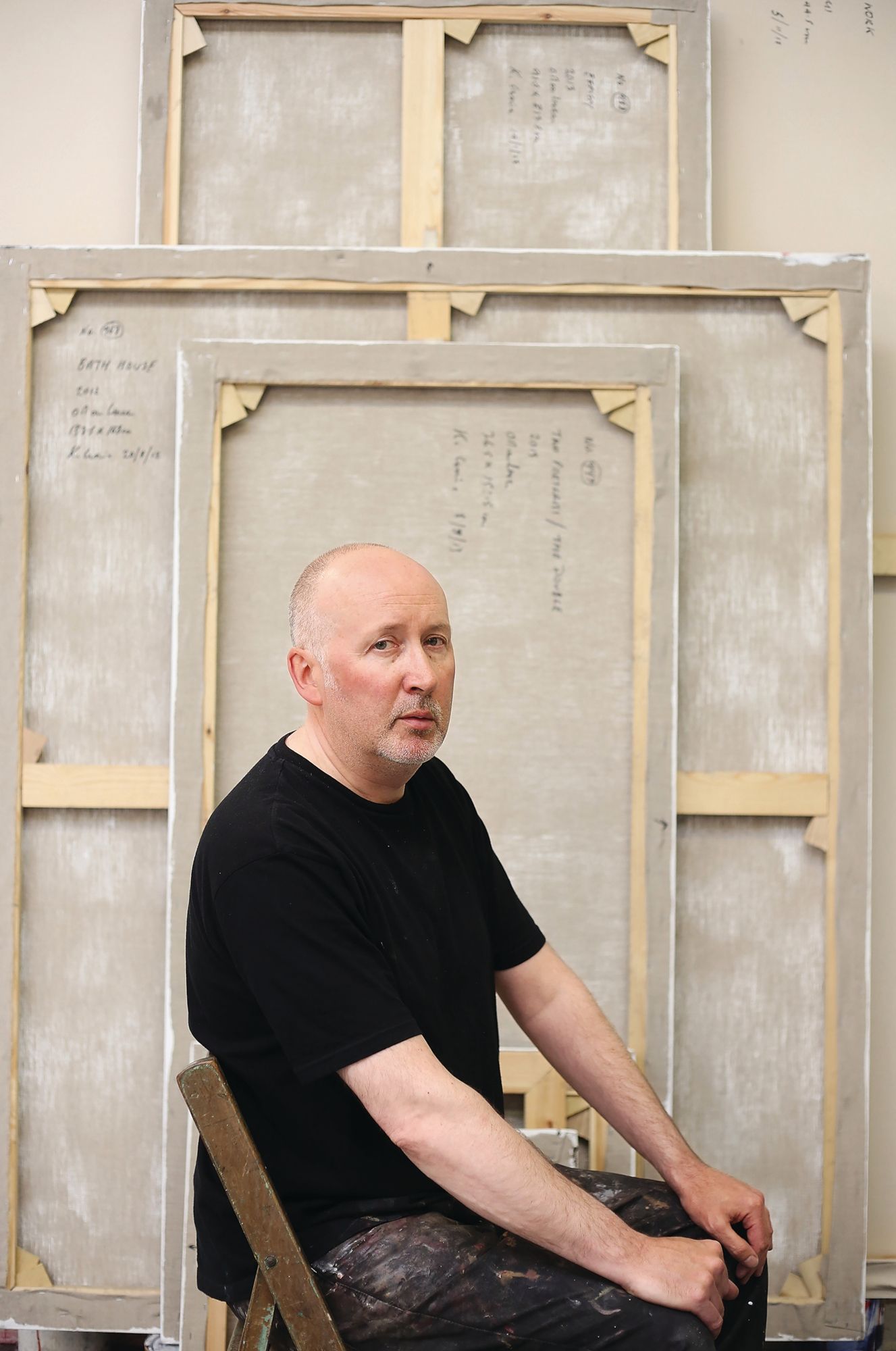Ken Currie’s dark, moody paintings explore the vulnerability of the human body. They are now on show in Hong Kong—and they feel more relevant than ever
Last spring, as Covid-19 swept into the UK, painter Ken Currie had a crisis.
“I was speaking to a lot of artists and people were saying, ‘What’s the point of art? Why are we doing this?’ It seemed like an indulgence to be painting when people are dying all around you,” Currie, 61, says in his Scottish burr, speaking from his studio in Glasgow. “It really got to me, but then I thought, ‘Artists from the past have dealt with famine, war, plague—if I can’t do it, then I’m not a proper artist.’ 2020 ended up being one of the most productive years I’ve ever had.”
Some of Currie’s new works are now on show in Interregnum at Flowers Gallery in Hong Kong, his first solo exhibition in Asia, which runs until May 29. Currie painted several of them in his garden shed, where he worked after his cavernous main studio was temporarily closed due to the pandemic. “I went from 1,000 sq ft to 120 sq ft, so I had to start working on much smaller pieces,” says Currie, whose canvases are often more than two metres tall and can stretch to more than six metres wide. His new works are as small as 45.5 cm by 61 cm, but they still investigate many of the same big, dark ideas that made Currie’s name: illness, death and decay.
See also: Artist Loie Hollowell On How Motherhood Inspired Her Paintings

Currie’s visceral depictions of sickness and surgery have brought him both acclaim and censure. He shot to fame in the 1980s as one the New Glasgow Boys, a group of figurative painters who investigated the city’s slide from an industrial powerhouse to one of the most deprived areas of western Europe, and how that painful decline affected its residents. “You’re talking about entire communities that haven’t had work for decades,” say Currie. “Unemployment, poverty, terrible housing problems—it all has an effect inside people. It transmits itself through ill health. Glasgow has some of the worst health outcomes of any industrialised city in the world. People are scientifically analysing it; it’s called the Glasgow Effect.”
In the Nineties, Currie started looking more closely at physical injuries, driven in part by his horror at the Yugoslav Wars unfolding in eastern Europe. He began painting grisly paintings of disfigured faces and bodies, and sometimes open wounds. Currie’s star continued to rise in the art community—his paintings are now in the collections of Tate in the UK, the Scottish National Gallery of Modern Art and the New York Public Library, among others—and his work was bought by major collectors, including David Bowie. But his macabre subject matter repulsed some of the public.
“I want my work to hover in that area between beauty and horror,” says Currie. “People often see something and say, ‘Oh my God, that’s disgusting’, but then have this strong desire to look as well. I like to operate in that liminal zone.”
See also: 10 Must-See Art Exhibitions In Hong Kong In April 2021




